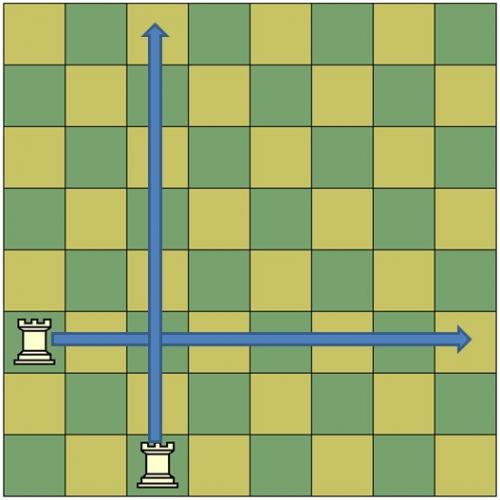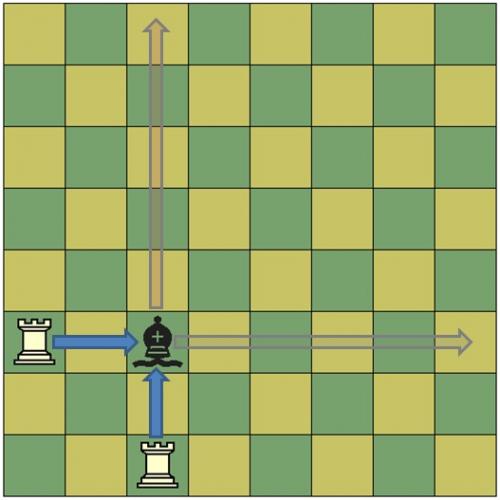Plachutta Power!
An Interference Theme
Interference is a popular motif in chess composition; it's popular enough that we have named several different forms of it. Here's how this one works.
Say you have two pieces guarding two key squares.

Tactically, we notice that their defensive lines intersect. This gives us the idea of throwing a wrench in at the intersection.

Assuming the watched squares are critical, white must capture it to maintain watch.

In a normal interference pattern, the two pieces are of different type and thus block each other's lines. In this case, for now, the Rook on c3 is able to watch the 2 squares. But he has been forced to take over Ra3's job of watching h3. A second forceful move exploits this.

We execute the threat on one critical square (h3). White's Rook has to take, and then...

...death comes on the other critical square.
Yeah, I know. Blah, blah, blah. Let's see an example.
B. Pandolfini, ChessMaster 10 Academy
Black mates in 4
Black mates in 4
This is a game-like example. White's King is in a dangerous position, but white looks to have the critical squares locked down. But did you notice the two key defensive pieces and the chance to trip them up?
...
...
...
...
...
(If you didn't solve it yet, go back up and do it. It's easy. I just told you what trick to use.)
...
...
...
...
...
...or, if white captures with the Rook:
Put this concept in the hands of a problem composer, and you will get a more subtle first move that leads to the interference later on.
T. Steudel, 1954
Problems for solving
D. Densmore, 1916
White mates in 4
White mates in 4
F. Hoffmann, 2006
White mates in 4
White mates in 4

